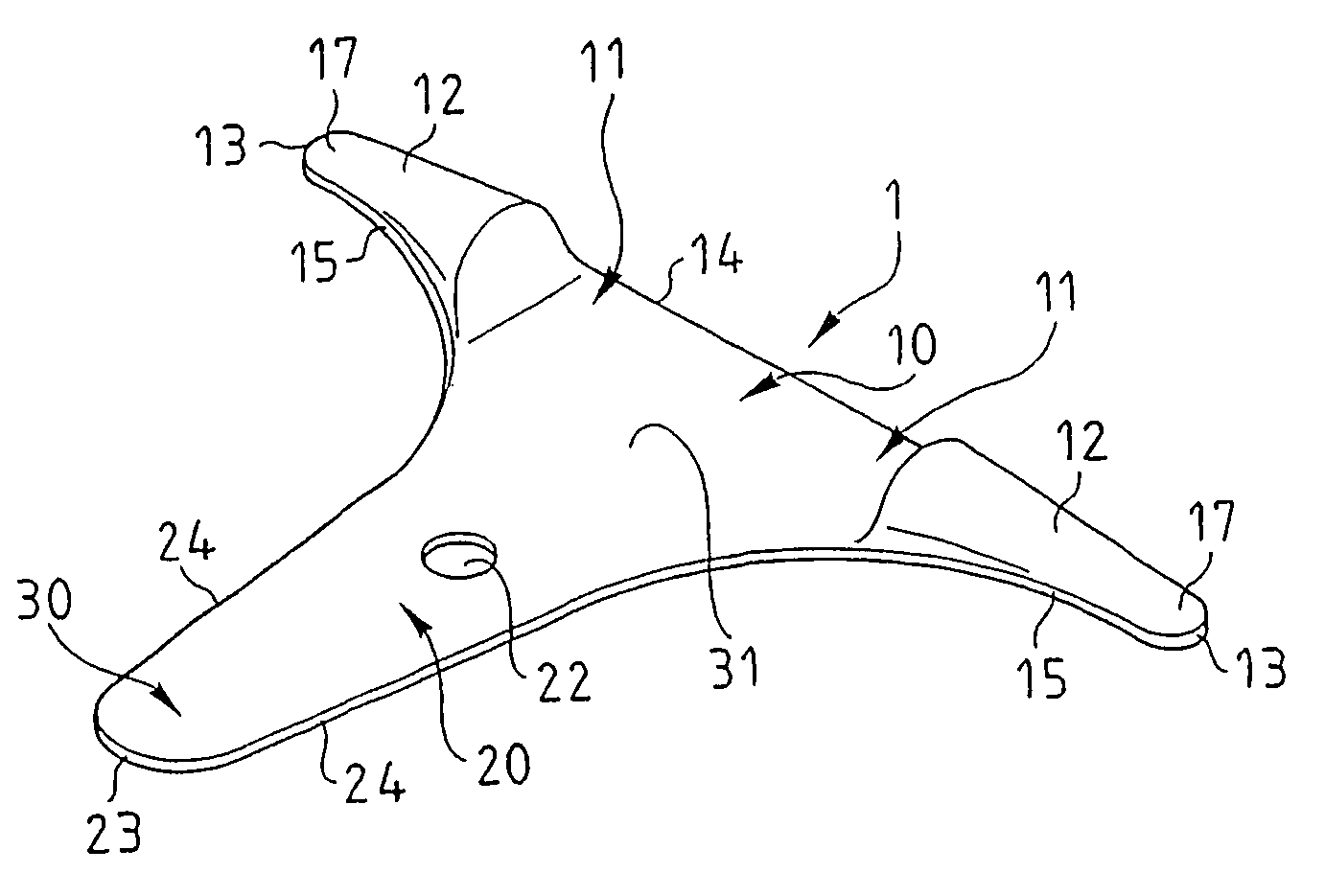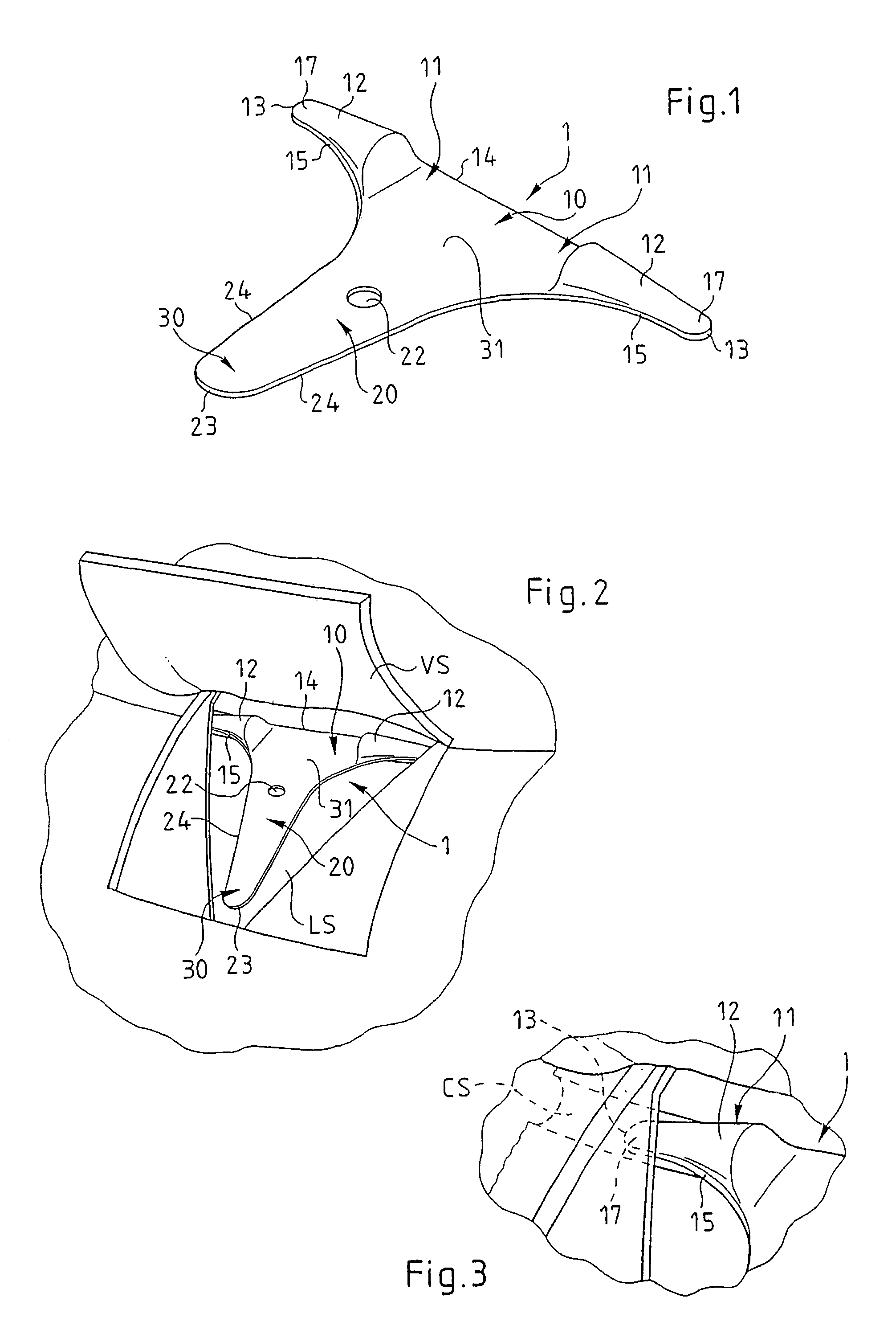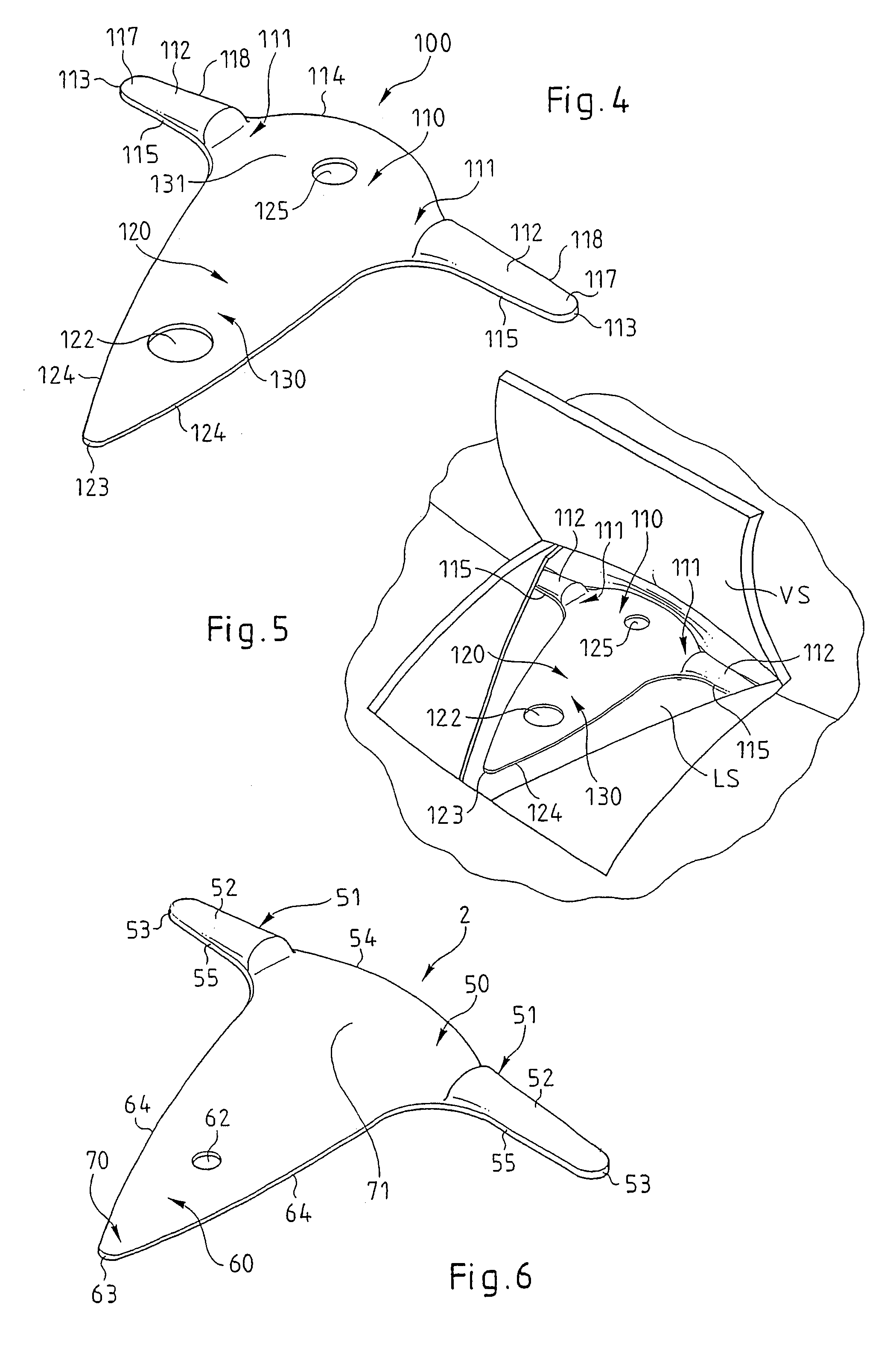Glaucoma drain
a technology of glaucoma and drain, applied in the field of glaucoma drain, can solve the problems of limiting the duration of operation effectiveness, high manufacturing cost of implants and drains of animal origin, and risk of transmitting diseases to surgeons on religious grounds, so as to achieve the effect of increasing porosity
- Summary
- Abstract
- Description
- Claims
- Application Information
AI Technical Summary
Benefits of technology
Problems solved by technology
Method used
Image
Examples
second embodiment
[0044]The glaucoma drain 100 as illustrated in FIG. 4, is also adapted to be implanted in the deep scleral bed (LS) in the course of a deep non-penetrating sclerectomy (see FIG. 5).
[0045]The glaucoma drain 100 is also produced from the same biocompatible, non-resorbable, hydrophilic and non-pyrogenic material as that of the first embodiment and enables the same implantation to be carried out, with the same functions and advantages as those of the first embodiment.
[0046]The drain 100 comprises a transverse bar 110 and a longitudinal body 120. The transverse bar 110 is situated at a so-called front end and comprises a pair of arms 111 extending in opposite directions. The longitudinal body 120 extends longitudinally to a portion of the transverse bar. The general axis of the transverse bar 110 and that of the longitudinal body 120 are thus substantially perpendicular to each other. The longitudinal body preferably extends from the center of the latter and thus the drain 100 is genera...
third embodiment
[0058]In a third embodiment illustrated in FIG. 6, the glaucoma drain 2 comprises a transverse bar 50 and a longitudinal body 60. The transverse bar 50 is situated at a so-called front end and comprises a pair of arms 51 extending in opposite directions. The longitudinal body 60 extends longitudinally to a portion of the transverse bar. The general axis of the transverse bar 50 and that of the longitudinal body 60 are thus substantially perpendicular to each other. The longitudinal body preferably extends from the center of the latter and thus the drain 2 is also generally T-shaped.
[0059]The outline of the drain is defined by the edges of the transverse bar 50 and of the longitudinal body 60 and comprises a front edge 54 comprising a central convex portion of the transverse bar 50 then continuing rectilinearly as far as the rounded ends 53 of the bar. The outline then follows the lateral edges 55 on the other side of each of the arms and then follows the lateral edges 64 of the long...
PUM
 Login to View More
Login to View More Abstract
Description
Claims
Application Information
 Login to View More
Login to View More - R&D
- Intellectual Property
- Life Sciences
- Materials
- Tech Scout
- Unparalleled Data Quality
- Higher Quality Content
- 60% Fewer Hallucinations
Browse by: Latest US Patents, China's latest patents, Technical Efficacy Thesaurus, Application Domain, Technology Topic, Popular Technical Reports.
© 2025 PatSnap. All rights reserved.Legal|Privacy policy|Modern Slavery Act Transparency Statement|Sitemap|About US| Contact US: help@patsnap.com



